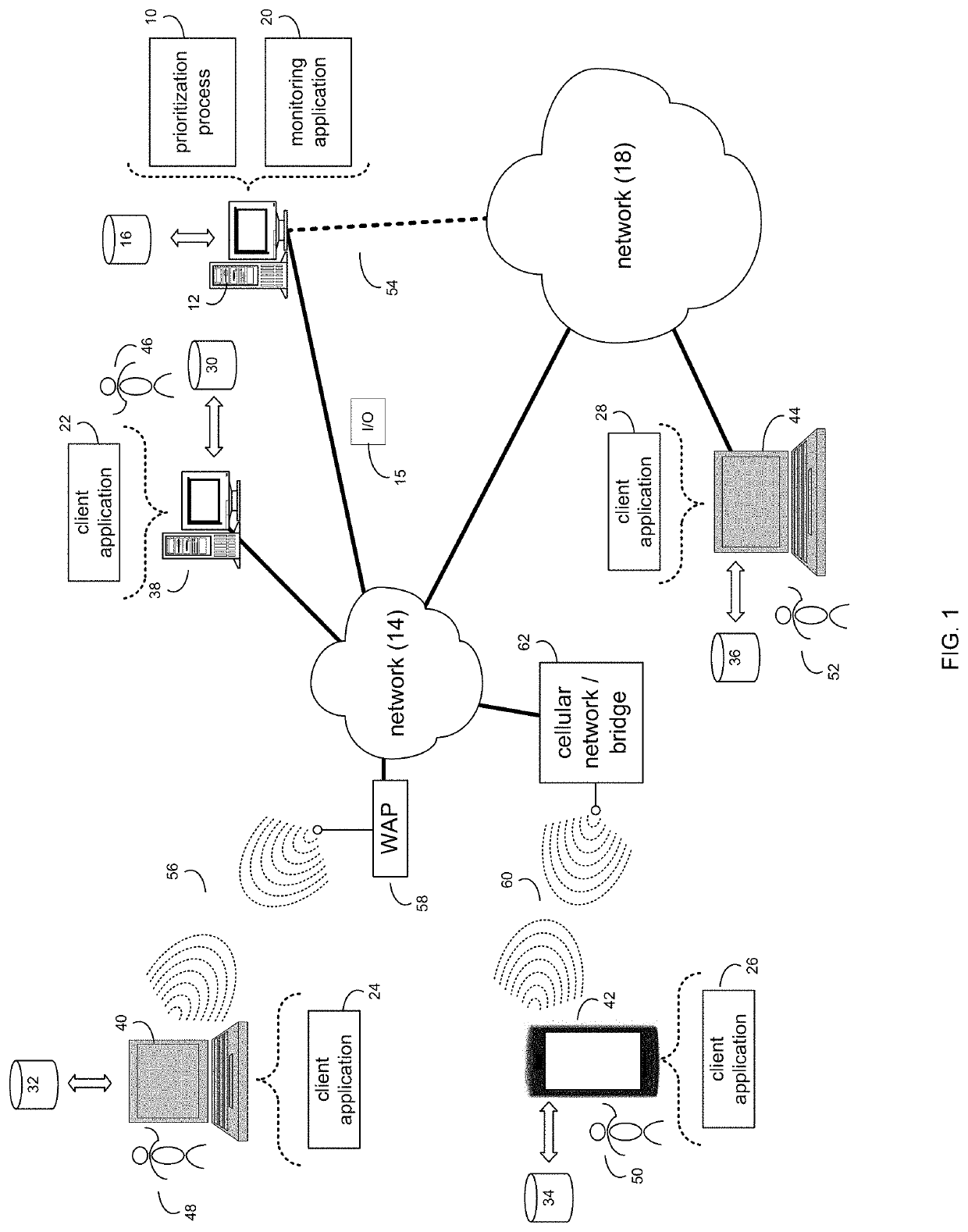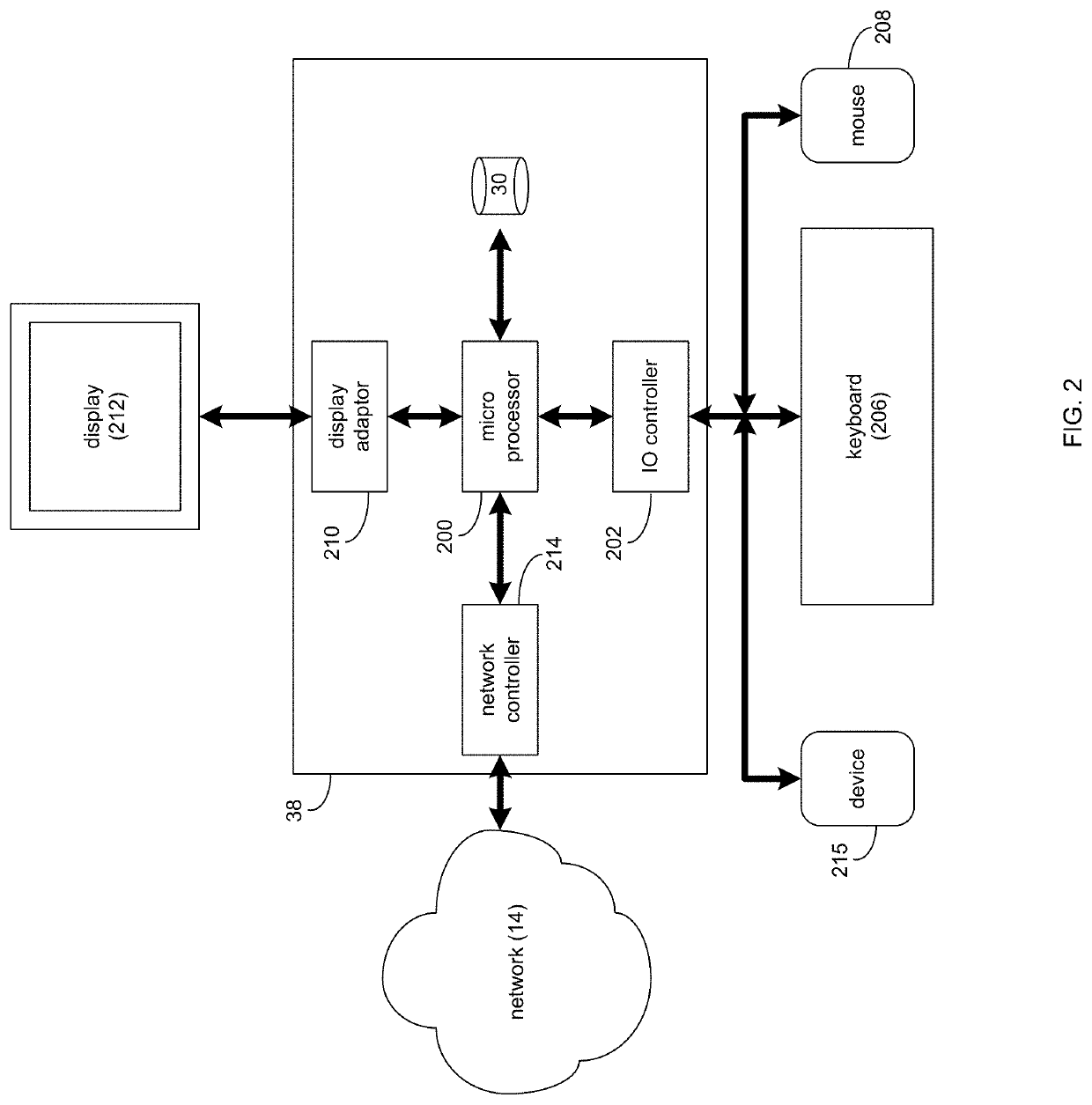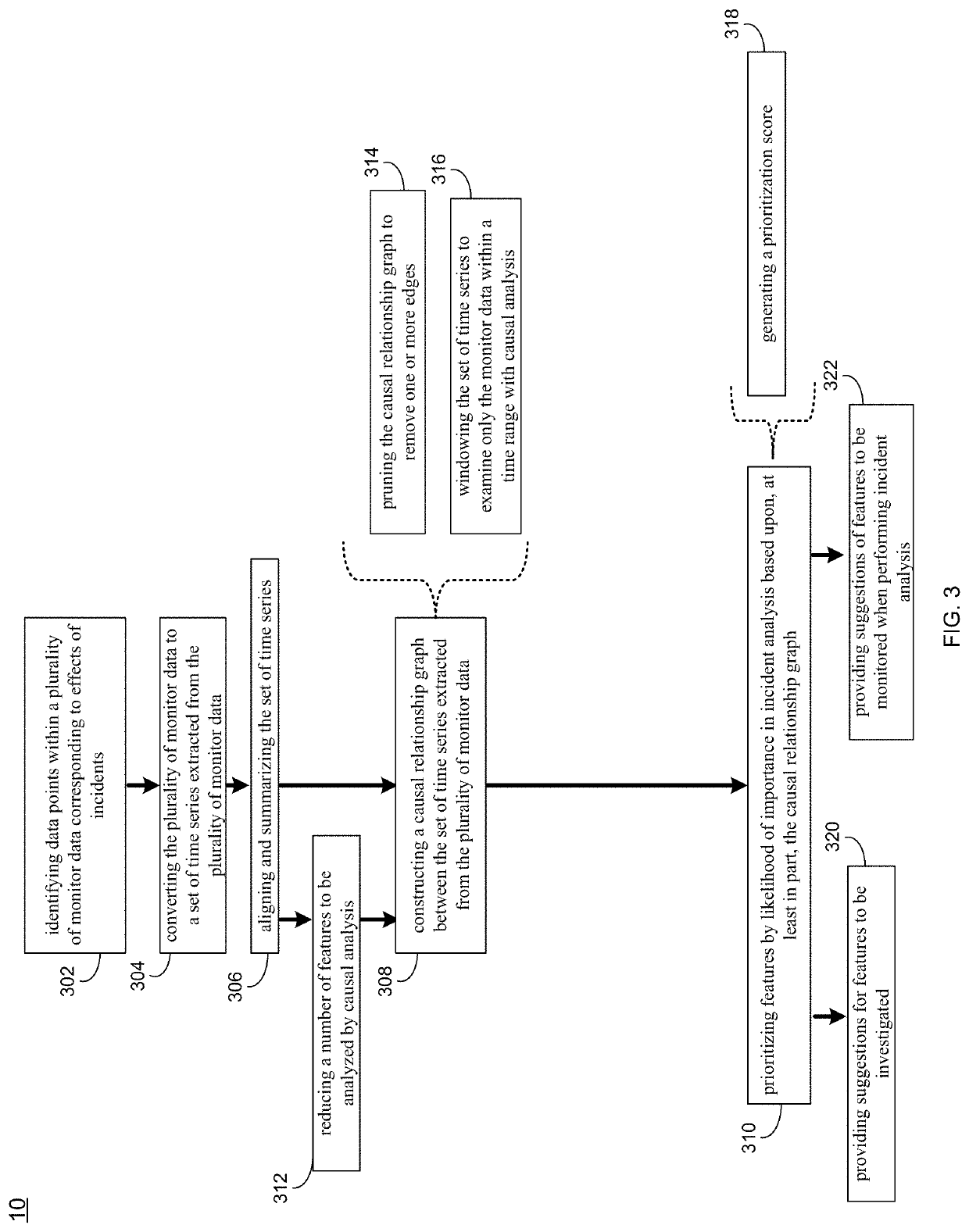Prioritization of data collection and analysis for incident detection
a technology for incident detection and data collection, applied in the field of priority of data collection and analysis for incident detection, can solve problems such as reliability, performance, safety, security, availability,
- Summary
- Abstract
- Description
- Claims
- Application Information
AI Technical Summary
Benefits of technology
Problems solved by technology
Method used
Image
Examples
Embodiment Construction
System Overview:
[0019]As noted above, in distributed computer (e.g., IT) systems, system data may be collected for analysis and detection of undesirable events. In IT systems, analysis is typically done through generation of tickets at a helpdesk and manual analysis of the tickets and metric and log information to identify the root cause of the event. Incident response teams (IRTs) typically must manually inspect the data in the collected metric and log files to identify unexpected behavior, then relate the behavior to that evidenced by other metric and log information to reconstruct a picture of the behavior of systems when the undesirable event occurred. If the event occurred over a large timescale, this effort may be complicated by the high volume of benign data points that do not correspond to the behavior related to the undesirable event.
[0020]When determining which data to collect and where to begin analysis, system administrators and IRTs typically must rely on prior monitori...
PUM
 Login to View More
Login to View More Abstract
Description
Claims
Application Information
 Login to View More
Login to View More - R&D
- Intellectual Property
- Life Sciences
- Materials
- Tech Scout
- Unparalleled Data Quality
- Higher Quality Content
- 60% Fewer Hallucinations
Browse by: Latest US Patents, China's latest patents, Technical Efficacy Thesaurus, Application Domain, Technology Topic, Popular Technical Reports.
© 2025 PatSnap. All rights reserved.Legal|Privacy policy|Modern Slavery Act Transparency Statement|Sitemap|About US| Contact US: help@patsnap.com



